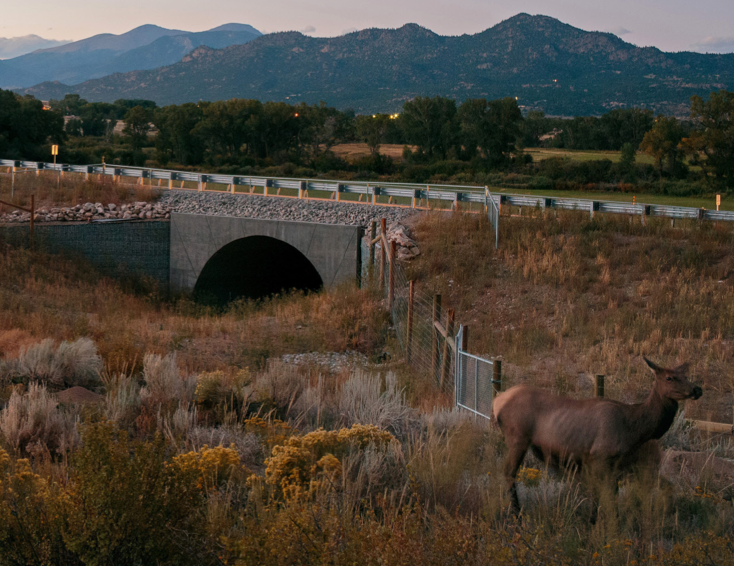Wildlife crossing structures (overpasses, culverts) are key tools for reducing the impacts of roads on animal movement and therefore critical to maintaining connectivity between populations. If designed and sited appropriately, crossing structures can also play a major role in supporting wildlife adaptation to climate change, helping animals to track favorable climate conditions and access shifting resources.
Working with The Pew Charitable Trusts and ECO-resolutions, CSP convened more than a dozen climate, wildlife, and road ecology experts from across the US to develop a set of guidelines for managers and policymakers to incorporating wildlife crossings as a critical element of community and government climate response strategies. This effort resulted in a joint statement urging government officials at all levels to consider climate change when planning and constructing structures that help fish and wildlife cross under and over highways. The statement includes a call to action and recommendations for implementing climate-informed wildlife crossings that will enhance ecosystem resilience and facilitate adaptation
The last two decades have seen amazing advances in our understanding of how animals move across the landscape and how wildlife populations are shifting in response to climate change. With guidance from the new expert recommendations, decision makers and planners can harness this wealth of information to ensure our road networks support rather than disrupt these critically important ecological processes. As the appetite increases for solutions that improve wildlife migration and movement while reducing wildlife-vehicle collisions, there is a heightened need and opportunity for designing infrastructure that is sited and designed in ways that accommodate the current and anticipated impacts of climate change.


